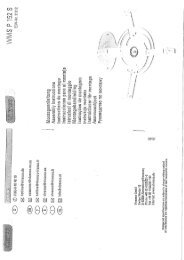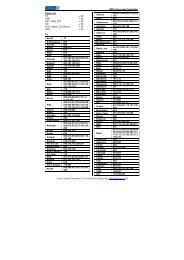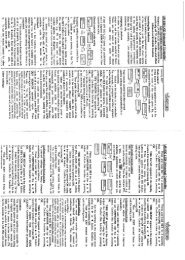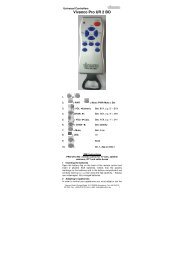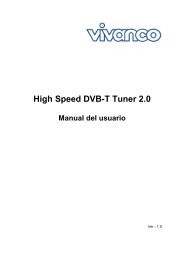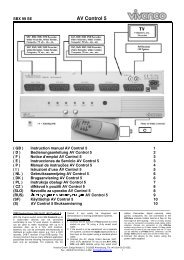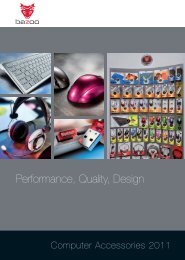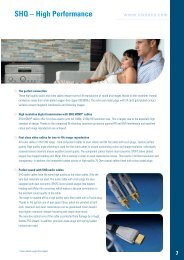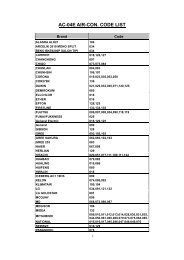computer
computer
computer
You also want an ePaper? Increase the reach of your titles
YUMPU automatically turns print PDFs into web optimized ePapers that Google loves.
150<br />
SATA<br />
eSATA<br />
GLOSSARY<br />
Printer connection method<br />
The printer interface concept was developed in the seventies by the market cableer at the time,<br />
centronics. It was a quicker variant of the serial interface as it was able to achieve the parallel<br />
transfer of 8 sets of data and the matrix printer could already process up to approx “150 Kbyte/sec”.<br />
In 1991, IBM ® , Lexmark ® und TI amongst others, developed rapid and powerful protocols with the<br />
IEEE connection and transfer techniques via this interface, that allowed the faster printers to be<br />
connected along with many other external equipments, such as scanners, streamers and cameras.<br />
In the meantime, this type of connection has largely been superseded by the USB system. It is only<br />
needed for older equipment or operating systems.<br />
Serial ATA / extern Serial ATA<br />
Serial ATA, or SATA for short (Serial Advanced Technology Attachment) is the technical successor<br />
of the former ATA hard drive connection. In comparison to previous standards (parallel) ATA 100<br />
or ATA 133, SATA has considerable advantages. On the one hand the data transfer rate could be<br />
increased from 133 Mbps to 150 Mbps. On the other hand the specification incorporates significant<br />
mechanical and electrical alterations. Pivotal is the serial data transfer procedure. Increasing<br />
speed and the resultant synchronisation problems with parallel operation now make it impossible<br />
to continue with the parallel transfer system.<br />
In comparison to the 40/80-pin cable, the 7-pin SATA cable is considerably thinner and more<br />
flexible, meaning that the airflow in modern high-performance <strong>computer</strong>s is less adversely<br />
affected. Another significant characteristic is the ability to connect and disconnect peripheral<br />
equipment whilst the <strong>computer</strong> is operating (hot plugging).<br />
Since 2004, using SATA II data transfer rate of 300 Mbps has been achieved by 2007 a rate of<br />
600 Mbps should have been achieved. The SATA interface is downwards compatible to the ATA<br />
standard, meaning that ATA hard drives can be operated using an active adapter. SATA will be on<br />
even greater significance, once the new serial SCSI standard (SAS) has become more widely<br />
used. SAS hard drives will be able to be operated using SATA interfaces..<br />
SATA power supply will continue to be provided via a separate power supply cable that will require<br />
new specification.<br />
The SATA standard was designed for use inside the <strong>computer</strong> and therefore does not have the<br />
necessary shielding to protect it from electromagnetic interference and the plugs do not meet the<br />
requirements for external use. In order to be able to connect external hard drives using the<br />
highspeed SATA standard, an upgrade of the SATA standard was designed, the External Serial<br />
ATA (eSATA).<br />
The upgrade is related to the shielding of the entire cable and the geometric shape of the plug<br />
and sockets. The shielding makes external operation possible. The newly developed plug/socket<br />
geometry prevents unintentional internal use of an eSATA cable and improves the mechanical stability<br />
of the plugs to prevent them from being pulled out by accident.



